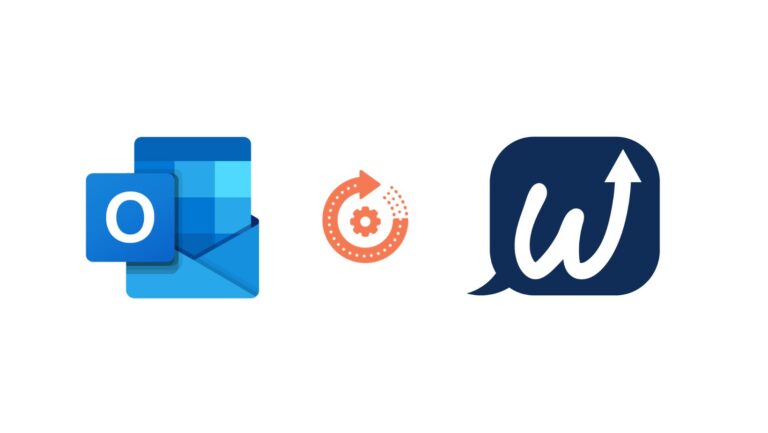A comprehensive guide to customer flow management
Effective customer flow management should guide customers through service environments and ensure a great experience. Forward-thinking organizations adopt various methods to achieve this. For example, the implementation of a clear and organized queuing system is crucial in high-traffic locations. Digital queue management systems significantly improve customer satisfaction, reduce wait times by up to 35%, and enhance the overall service experience. Customer flow software with queue management capabilities facilitates remote check-ins, offers real-time updates, provides upfront information, and sends instant notifications. This functionality aims to reduce the inconvenience of waiting, contributing to an improved and more seamless customer journey.
Customer flow management is also key to generating insights that businesses can lean on to improve customer experience, which always affects organizational performance; research has shown that organizations that leverage customer behavioral insights outperform peers by 85 percent in sales growth and more than 25 percent in gross margin.
Therefore, prioritizing customer flow management is essential for enhancing customer experience and operational efficiency for every organization looking to excel. This guide provides the knowledge and strategies to transform the way customers interact with service organizations, making every interaction a positive experience.
Components of customer flow
Customer flow has several key aspects, ranging from the physical movement of customers to their psychological experiences. Below, some key aspects are examined briefly.
Physical movement in a space: These are steps customers take from entering a business to their exit, including activities like waiting, interacting with staff, browsing, shopping, and making transactions. To optimize this flow, businesses typically focus on efficient layout design, clear signage, and strategic placement of staff and products to facilitate easy navigation and minimize bottlenecks.
Customer journey through various service touchpoints: This refers to the interaction of customers with different aspects of the business, including advertising, tools used for product evaluation, interactions with sales associates, and their path through the physical location or digital platform. Mapping the customer journey across these interactions often helps businesses understand and optimize these touchpoints by identifying stages in the customer relationship and setting goals for improvement at each stage.
The psychological aspect of customer experience: Customer satisfaction is closely linked to their psychological experience in a business environment. Factors like waiting time, store/waiting room/lobby congestion, and staff interactions significantly impact customer emotions. Many customers tend to associate waiting in line with negative feelings. Therefore, improving customer flow can lead to enhanced customer satisfaction.
Tools for tracking and analyzing customer flow: Tools like WaitWell empower organizations to keep track of customer flow and gain insights into how customers move through different service touch points and the time they spend at each touch point. This allows organizations to make data-backed decisions for service improvements. For example, through WaitWell, businesses can see average service times and wait times per staff and decide whether they are overstaffed or short-staffed.

Strategies for optimizing customer flow
Leveraging technology
Digital solutions are at the forefront of innovation, and leveraging technology to manage customer flow is a no-brainer. Digital tools such as WaitWell with online appointment scheduling, virtual queuing, and workflow systems are key to customer flow management. They not only streamline the process but also enhance the customer experience by reducing wait times and allowing customers to manage their visits more efficiently.
University offices, clinics, banks, and other similar service-based businesses have successfully implemented WaitWell to enable customers to book specific time slots and be served promptly upon arrival. Apart from optimizing customer flow, this also helps in managing staff workloads.
Intuitive design
The foundation of optimal customer flow lies in intuitive design. A well-thought-out physical layout can make the difference between a seamless, enjoyable customer journey and a confusing, frustrating experience. The most successful layouts are those that intuitively guide customers through the space, subtly leading them to their desired destinations while also exposing them to key areas of the business.
For instance, retail giants often use strategic layouts. A winding trail through various sections designed to expose customers to a wide range of products while ensuring they never feel lost. This design maximizes product exposure without compromising the ease of navigation.
Harnessing data analytics
Data analytics offers a treasure trove of insights for optimizing customer flow. By analyzing customer movement patterns, wait times, appointment utilization, queue lengths, service times, and peak hours, businesses can make informed decisions about layout changes, staffing needs, and even marketing strategies.
A government office, for example, can use insights generated from service times to understand staff performance, training needs, and the efficiency of resource allocation.
The role of staff
While design and technology are crucial, the human element remains vital. Well-trained staff play an instrumental role in guiding customer flow. They not only provide assistance and direction but also manage queues, address bottlenecks, and enhance overall customer experience.
Effective training methods for staff should include not just the operational aspects of their roles but also focus on customer interaction skills. Empathetic and knowledgeable staff can transform a potentially confusing layout into a navigable and pleasant journey for the customer.
Customer flow management by industry
Customer flow management varies significantly across industries. Each sector faces unique challenges and requires specialized strategies to optimize the movement and experience of its customers. Some of the unique strategies adopted by different sectors are examined below.
Retail
In retail, customer flow management revolves around enhancing the shopping experience and maximizing sales. Key strategies include:
- Layout design: Retail stores often use a grid layout to guide customers methodically through the space, ensuring maximum exposure to products.
- Signage and wayfinding: Clear signage helps in easy navigation, leading customers to specific areas or promotions.
- Checkout optimization: Efficient checkout processes, including multiple payment options and self-checkout kiosks, can significantly reduce wait times and improve flow.
- Seasonal adjustments: During peak seasons, temporary changes in layout and additional checkout counters can accommodate increased foot traffic.
- Virtual queues: In busy and specialized segments of large stores, by implementing virtual queues, customers can continue shopping while they wait for their turn in a specific segment. This reduces perceived wait times and increases sales as customers spend more time browsing.
Hospitality
The hospitality industry, encompassing hotels, restaurants, airports, and entertainment venues, focuses on creating a welcoming, comfortable environment for guests.
- Lobby layout: A spacious, well-organized lobby with clear signage can streamline check-ins and movement.
- Event management: For entertainment venues, crowd control measures, including ticketing systems and orderly queuing, are essential for managing large groups efficiently.
- Technology: Systems like WaitWell can revolutionize entertainment or event venues. For example, at Langer’s and Telus Spark, QR check-ins and virtual queues have allowed attendees to enjoy the event rather than wait in line, improving flow and overall experience.
Healthcare services
Healthcare services prioritize patient flow and confidentiality alongside providing care.
- Appointment systems: Scheduled appointments and digital check-in systems help manage patient flow and reduce wait times in clinics and hospitals.
- Waiting room management: Comfortable waiting areas with clear information on wait times and procedures can ease patient anxiety and organize flow.
- Emergency and regular care separation: Differentiating pathways for emergency and regular patients ensures efficient handling of diverse medical needs.
Banking
Banks and financial institutions focus on efficient service delivery while maintaining security.
- Queue management systems: Digital queuing and appointment systems help manage customer flow, especially during peak banking hours.
- Online banking portals: Encouraging customers to use online services for routine transactions can reduce physical footfall.
- In-person consultation areas: Designated areas for private consultations maintain customer privacy and reduce congestion in general service areas.
Higher education
- Centralized service points: ‘One-stop’ shops in universities consolidate various student services (registration, financial aid, counseling) into a single location, streamlining the student experience.
- Digital information kiosks: To provide students with easy access to information and reduce the need for face-to-face inquiries.
- Feedback systems: Implementing feedback mechanisms to continually adapt and improve the flow and efficiency of student services.
- Use of technology: WaitWell has proven pivotal to managing student flow in many higher institutions. From allowing students to join virtual queues and book appointments, to reducing physical waiting times and enhancing the efficiency of service delivery to students.
Overcoming the top challenges in customer flow management
Successfully managing customer flow is a dynamic and ongoing challenge. It requires a strategic blend of proactive planning, technological integration, and adaptability to changing circumstances and customer needs.
1. Dealing with high-traffic volumes
High-traffic periods can strain resources and negatively impact the customer experience. Overcoming this challenge requires both proactive planning and real-time management strategies.
- Capacity planning: Analyzing historical data to predict high-traffic periods and planning accordingly in terms of staffing, inventory, and space utilization.
- Dynamic staff allocation: Where possible, implement a system where staff can be quickly redeployed to areas experiencing high traffic.
- Virtual queuing systems: Utilizing technology to manage queues, allowing customers to wait remotely and be notified when it’s their turn.
2. Managing unexpected disruptions
Unexpected events like system failures, emergencies, or sudden influxes of customers can disrupt customer flow. Effective response strategies are essential to minimize these impacts.
- Emergency protocols: Having well-practiced emergency response plans that staff are thoroughly trained in.
- Flexibility in operations: Being able to quickly adapt operational strategies, like altering layouts or opening additional checkouts in response to unexpected situations.
- Real-time communication: Using digital signage, WaitWell’s two-way communication capabilities, or public address systems to inform customers about disruptions and guide them accordingly.
3. Adapting to changing customer behaviors and expectations
Customer behaviors and expectations are constantly evolving, influenced by technological advancements and broader societal changes. Staying attuned to these shifts is essential.
- Customer feedback mechanisms: Regularly collecting and analyzing feedback to understand changing preferences and pain points.
- Technology integration: Keeping pace with digital trends, such as mobile apps and AI, to enhance customer interaction and convenience.
- Personalization: Utilizing data analytics and robust customer flow software to offer more tailored experiences, which can include tailored recommendations or individualized service options.
Embracing innovative solutions like WaitWell can be a game-changer in this domain. The system offers a sophisticated yet user-friendly customer flow solution to streamline queues, appoint scheduling and check-ins, and enhance workflow. By adopting WaitWell, organizations across various sectors—retail, healthcare, banking, and education— can efficiently manage high volumes of service traffic, minimize disruptions, and adapt to changing behaviors.
A proactive step towards optimizing customer flow is always an operational improvement and often leads to stronger, more satisfying, and enduring service relationships with customers.







